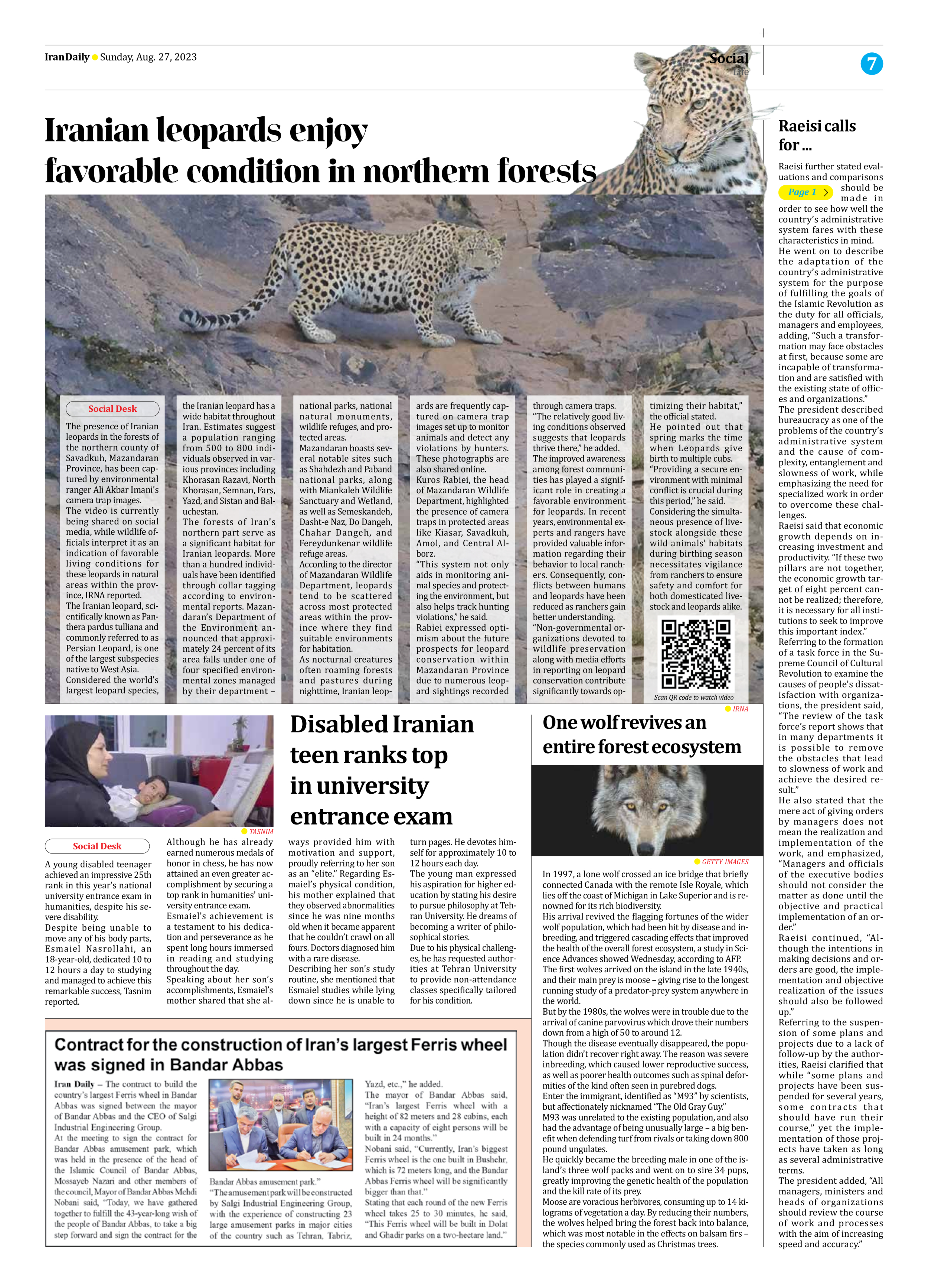
Iranian leopards enjoy favorable condition in northern forests
The presence of Iranian leopards in the forests of the northern county of Savadkuh, Mazandaran Province, has been captured by environmental ranger Ali Akbar Imani’s camera trap images.
The video is currently being shared on social media, while wildlife officials interpret it as an indication of favorable living conditions for these leopards in natural areas within the province, IRNA reported.
The Iranian leopard, scientifically known as Panthera pardus tulliana and commonly referred to as Persian Leopard, is one of the largest subspecies native to West Asia.
Considered the world’s largest leopard species, the Iranian leopard has a wide habitat throughout Iran. Estimates suggest a population ranging from 500 to 800 individuals observed in various provinces including Khorasan Razavi, North Khorasan, Semnan, Fars, Yazd, and Sistan and Baluchestan.
The forests of Iran’s northern part serve as a significant habitat for Iranian leopards. More than a hundred individuals have been identified through collar tagging according to environmental reports. Mazandaran’s Department of the Environment announced that approximately 24 percent of its area falls under one of four specified environmental zones managed by their department – national parks, national natural monuments, wildlife refuges, and protected areas.
Mazandaran boasts several notable sites such as Shahdezh and Paband national parks, along with Miankaleh Wildlife Sanctuary and Wetland, as well as Semeskandeh, Dasht-e Naz, Do Dangeh, Chahar Dangeh, and Fereydunkenar wildlife refuge areas.
According to the director of Mazandaran Wildlife Department, leopards tend to be scattered across most protected areas within the province where they find suitable environments for habitation.
As nocturnal creatures often roaming forests and pastures during nighttime, Iranian leopards are frequently captured on camera trap images set up to monitor animals and detect any violations by hunters. These photographs are also shared online.
Kuros Rabiei, the head of Mazandaran Wildlife Department, highlighted the presence of camera traps in protected areas like Kiasar, Savadkuh, Amol, and Central Alborz.
“This system not only aids in monitoring animal species and protecting the environment, but also helps track hunting violations,” he said.
Rabiei expressed optimism about the future prospects for leopard conservation within Mazandaran Province due to numerous leopard sightings recorded through camera traps.
“The relatively good living conditions observed suggests that leopards thrive there,” he added.
The improved awareness among forest communities has played a significant role in creating a favorable environment for leopards. In recent years, environmental experts and rangers have provided valuable information regarding their behavior to local ranchers. Consequently, conflicts between humans and leopards have been reduced as ranchers gain better understanding.
“Non-governmental organizations devoted to wildlife preservation along with media efforts in reporting on leopard conservation contribute significantly towards optimizing their habitat,” the official stated.
He pointed out that spring marks the time when Leopards give birth to multiple cubs.
“Providing a secure environment with minimal conflict is crucial during this period,” he said.
Considering the simultaneous presence of livestock alongside these wild animals’ habitats during birthing season necessitates vigilance from ranchers to ensure safety and comfort for both domesticated livestock and leopards alike.







